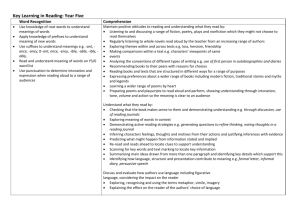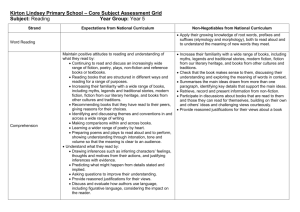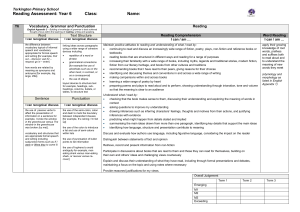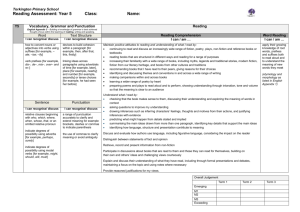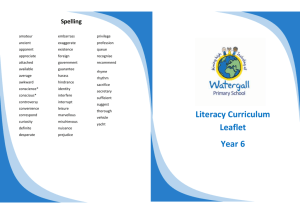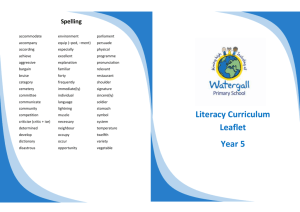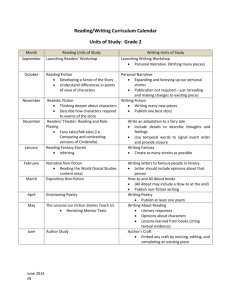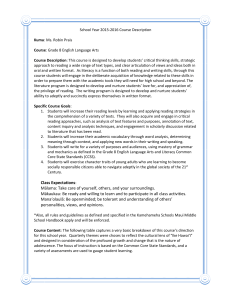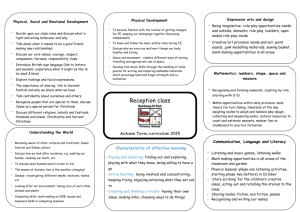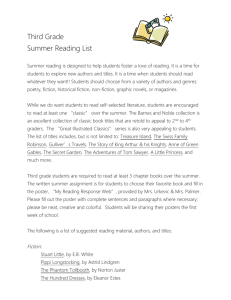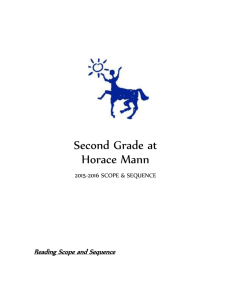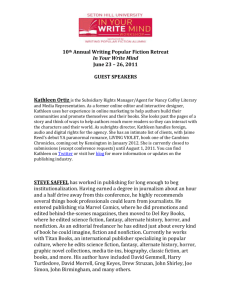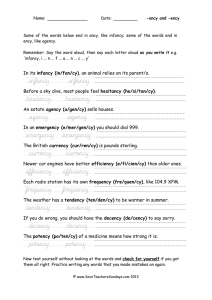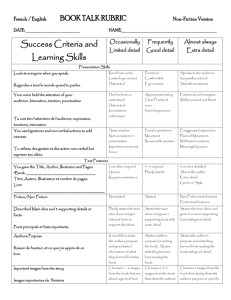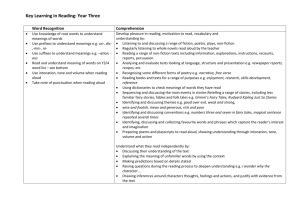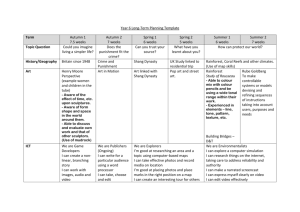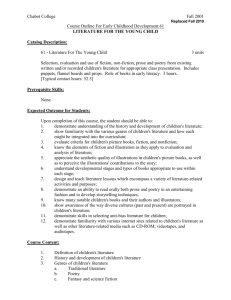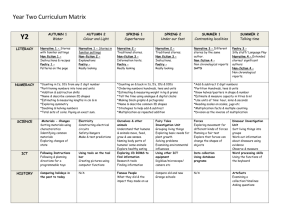Key Learning in Reading Year 5 : file
advertisement
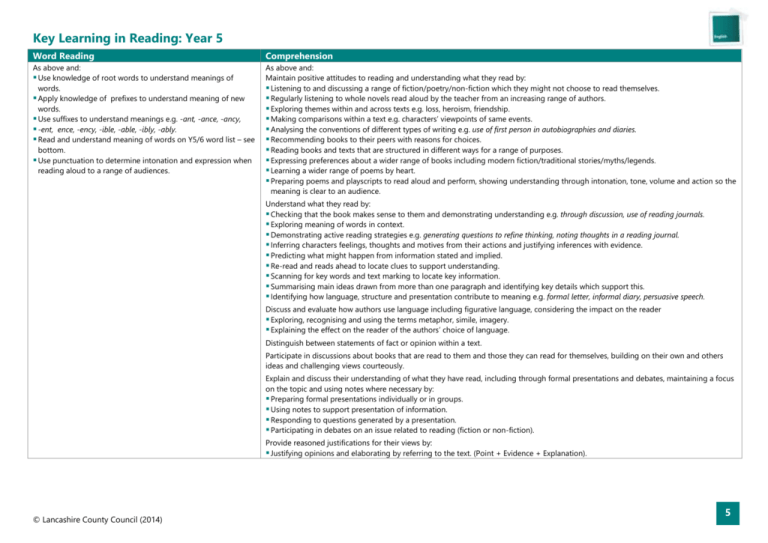
Key Learning in Reading: Year 5 Word Reading Comprehension As above and: Use knowledge of root words to understand meanings of words. Apply knowledge of prefixes to understand meaning of new words. Use suffixes to understand meanings e.g. -ant, -ance, -ancy, -ent, ence, -ency, -ible, -able, -ibly, -ably. Read and understand meaning of words on Y5/6 word list – see bottom. Use punctuation to determine intonation and expression when reading aloud to a range of audiences. As above and: Maintain positive attitudes to reading and understanding what they read by: Listening to and discussing a range of fiction/poetry/non-fiction which they might not choose to read themselves. Regularly listening to whole novels read aloud by the teacher from an increasing range of authors. Exploring themes within and across texts e.g. loss, heroism, friendship. Making comparisons within a text e.g. characters’ viewpoints of same events. Analysing the conventions of different types of writing e.g. use of first person in autobiographies and diaries. Recommending books to their peers with reasons for choices. Reading books and texts that are structured in different ways for a range of purposes. Expressing preferences about a wider range of books including modern fiction/traditional stories/myths/legends. Learning a wider range of poems by heart. Preparing poems and playscripts to read aloud and perform, showing understanding through intonation, tone, volume and action so the meaning is clear to an audience. Understand what they read by: Checking that the book makes sense to them and demonstrating understanding e.g. through discussion, use of reading journals. Exploring meaning of words in context. Demonstrating active reading strategies e.g. generating questions to refine thinking, noting thoughts in a reading journal. Inferring characters feelings, thoughts and motives from their actions and justifying inferences with evidence. Predicting what might happen from information stated and implied. Re-read and reads ahead to locate clues to support understanding. Scanning for key words and text marking to locate key information. Summarising main ideas drawn from more than one paragraph and identifying key details which support this. Identifying how language, structure and presentation contribute to meaning e.g. formal letter, informal diary, persuasive speech. Discuss and evaluate how authors use language including figurative language, considering the impact on the reader Exploring, recognising and using the terms metaphor, simile, imagery. Explaining the effect on the reader of the authors’ choice of language. Distinguish between statements of fact or opinion within a text. Participate in discussions about books that are read to them and those they can read for themselves, building on their own and others ideas and challenging views courteously. Explain and discuss their understanding of what they have read, including through formal presentations and debates, maintaining a focus on the topic and using notes where necessary by: Preparing formal presentations individually or in groups. Using notes to support presentation of information. Responding to questions generated by a presentation. Participating in debates on an issue related to reading (fiction or non-fiction). Provide reasoned justifications for their views by: Justifying opinions and elaborating by referring to the text. (Point + Evidence + Explanation). © Lancashire County Council (2014) 5
